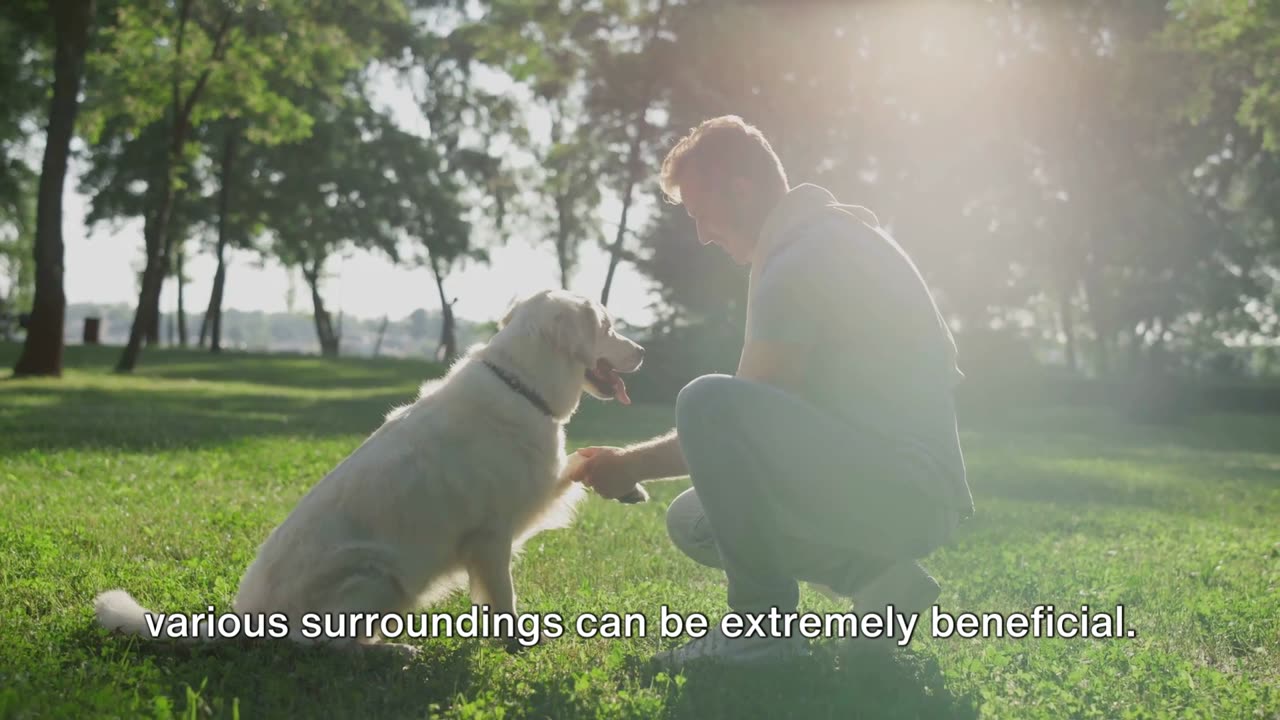Premium Only Content

Proven Techniques for Obedient dog Companions
Fundamentals of dog training techniques:
1. **Positive Reinforcement**:
- Positive reinforcement is a training technique that rewards desired behaviors with treats, praise, or toys.
- It strengthens the bond between the dog and the owner by creating a positive association with good behavior.
- This technique encourages dogs to repeat behaviors that earn rewards, making it effective for teaching commands and shaping desired behaviors.
- Positive reinforcement is based on the principles of operant conditioning, focusing on rewarding behaviors rather than punishing unwanted behaviors.
- It can be used to train dogs of all ages and breeds and is particularly effective for building confidence in shy or fearful dogs.
2. **Clicker Training**:
- Clicker training is a form of positive reinforcement that uses a small device called a clicker to mark desired behaviors.
- The clicker emits a distinct sound, signaling to the dog that they have performed the correct behavior and will receive a reward.
- Clicker training allows for precise timing, making it effective for shaping complex behaviors and capturing split-second actions.
- It helps dogs understand exactly which behavior is being rewarded, leading to faster learning and clearer communication between the dog and the trainer.
- Clicker training is widely used in obedience training, agility, and other dog sports due to its versatility and effectiveness.
3. **Marker Training**:
- Marker training is similar to clicker training but uses verbal markers such as "yes" or "good" instead of a clicker.
- Verbal markers serve the same purpose as a clicker, signaling to the dog that they have performed the correct behavior and will receive a reward.
- Marker training allows trainers to communicate with their dogs from a distance and in various environments where using a clicker may not be practical.
- It can be combined with other training techniques, such as luring and shaping, to teach complex behaviors and improve obedience.
4. **Lure and Reward**:
- Lure and reward training involves using a treat or toy to guide the dog into performing a desired behavior.
- The trainer uses the lure to attract the dog's attention and guide them into the desired position or action, such as sitting or lying down.
- Once the dog performs the desired behavior, they are rewarded with the treat or toy, reinforcing the behavior.
- Lure and reward training is effective for teaching basic obedience commands and shaping behaviors in young or inexperienced dogs.
- It should be accompanied by fading the lure gradually, so the dog learns to respond to verbal cues rather than relying on the presence of a lure.
5. **Capturing Behavior**:
- Capturing behavior involves rewarding the dog for spontaneously performing a desired behavior without any prompting from the trainer.
- The trainer observes the dog closely and rewards them immediately when they exhibit the desired behavior, such as sitting or shaking paws.
- Capturing behavior relies on timing and patience, as the trainer must be ready to reward the behavior as soon as it occurs.
- This technique is particularly effective for shaping behaviors that occur naturally and can be difficult to train using other methods.
6. **Shaping**:
- Shaping is a training technique that involves gradually molding a desired behavior by rewarding successive approximations of that behavior.
- The trainer breaks down the desired behavior into small, achievable steps and rewards the dog for each step towards the final behavior.
- Shaping requires patience and consistency, as the trainer must be able to recognize and reward small improvements in the dog's behavior.
- It is an effective technique for teaching complex behaviors, such as agility obstacles or tricks, by building upon the dog's existing skills and abilities.
7. **Desensitization and Counterconditioning**:
- Desensitization and counterconditioning are techniques used to modify a dog's emotional response to a particular stimulus, such as loud noises or strangers.
- Desensitization involves gradually exposing the dog to the stimulus at a low intensity, allowing them to become accustomed to it over time.
- Counterconditioning involves pairing the presence of the stimulus with something the dog enjoys, such as treats or play, to create a positive association.
- These techniques are often used to help dogs overcome fears, anxieties, and phobias by replacing negative emotions with positive ones.
-
 2:24:03
2:24:03
WeAreChange
9 hours agoMSNBC WRECKED, Mass Layoffs At CNN? Media RECKONING Is Here!
126K59 -
 2:10:32
2:10:32
Slightly Offensive
10 hours ago $25.02 earnedGET READY: Civil Unrests ERUPTS As Trump Resistance 2.0 EMERGES
66K37 -
 59:40
59:40
The StoneZONE with Roger Stone
6 hours agoShowdown in the Republican US Senate Caucus - RINOs Seek to Undermine Trump | The StoneZONE
65.5K42 -
 1:26:29
1:26:29
I_Came_With_Fire_Podcast
12 hours agoSpecial Episode: Frank Luna with Smokeless Vets
40.5K3 -
 4:16:31
4:16:31
Tundra Gaming Live
8 hours ago $1.38 earnedFormer Air Force Maintainer (Weapons) Hits The Grind For The F-16c
27.2K -
 1:07:06
1:07:06
The Officer Tatum
9 hours agoLIVE MSNBC, CNN IMPLODE As Trump BUILDS DREAM TEAM!
89.6K186 -
 17:42
17:42
DeVory Darkins
2 days agoCNN Dana Bash LOSES HER MIND After BRUTAL Reality Check
58.1K96 -
 2:01:49
2:01:49
Robert Gouveia
10 hours agoTrump Judge CAVES; Jack Gets SUED; J6 Prosecutions Continue! Elon Rigged It!
63.2K55 -
 1:06:20
1:06:20
Josh Pate's College Football Show
8 hours ago $3.76 earnedWeek 12 Prediction Show | Noon Kickoff Controversy | SEC Bias In Rankings | New JP Poll
30.2K1 -
 2:08:18
2:08:18
Quite Frankly
11 hours ago"2024 Election Myth-Busting & Extras" ft. Rich Baris & J Gulinello 11/12/24
31.7K34